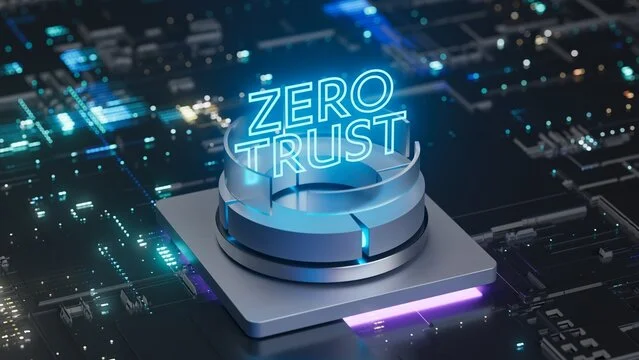
In the era of cloud-centric applications and ubiquitous remote work, traditional perimeter-based security crumbles against the ever-evolving threat landscape. Hackers don't need to break down the castle walls; they simply exploit backdoors and insider privileges once within. This calls for a fundamental shift in security strategy, one that embraces the principle of "trust no one, verify everything"—the cornerstone of zero-trust security.
But implementing Zero Trust in today's complex, distributed environments isn't a plug-and-play solution. It's a strategic journey, demanding careful planning, measured execution, and a cultural shift within your organization.
Before building a fortified castle, you need a blueprint. This starts with a comprehensive inventory of your organization's digital assets, including applications, data, and devices, regardless of location or ownership. Identify critical data repositories, high-value applications, and vulnerable access points.
Next, conduct a thorough risk assessment, pinpointing potential vulnerabilities and attack vectors. Analyze past incidents, industry trends, and emerging threats to understand the most likely risks your organization faces. This risk-based approach guides your Zero Trust implementation, prioritizing efforts based on potential impact.
With a clear understanding of your assets and risks, it's time to fortify your network with the core principles of zero trust:
Technology plays a vital role in streamlining and amplifying your zero-trust strategy. Consider these tools:
Zero Trust isn't just a technological endeavor; it's a cultural shift. Employees, from executives to frontline workers, must understand the importance of cybersecurity and their role in maintaining a secure environment. Regular security awareness training and employee buy-in are crucial for long-term success.
Implementing Zero Trust is an ongoing process. The threat landscape constantly evolves, requiring continuous security assessments, adjustments to your control framework, and the adoption of new technologies. Embrace a culture of continuous improvement, incorporating lessons learned from incidents, and evolving your security posture proactively.
In today's dynamic digital landscape, traditional security approaches leave organizations vulnerable. Embracing the principles of zero trust—least privilege, continuous verification, and zero trust by default—is no longer a luxury but a necessity. By strategically layering security controls, leveraging technology, and fostering a culture of cybersecurity awareness, organizations can build robust defenses and confidently navigate the digital frontier.
Zero Trust is a security model that requires strict identity verification for every person and device trying to access resources on a private network, regardless of whether they are sitting within or outside of the network perimeter.
With the rise of remote work, cloud computing, and mobile devices, traditional perimeter-based security is no longer sufficient. Zero Trust provides a more robust security approach that adapts to modern distributed work environments.
Implementing Zero Trust is a journey rather than a destination. It typically takes 12-24 months for a complete implementation, but organizations can start seeing benefits from early phases of deployment.
The key components include identity verification, device security, network segmentation, data security, and continuous monitoring and analytics.
Your email address will not be published. Required fields are marked *
Loading questions...
